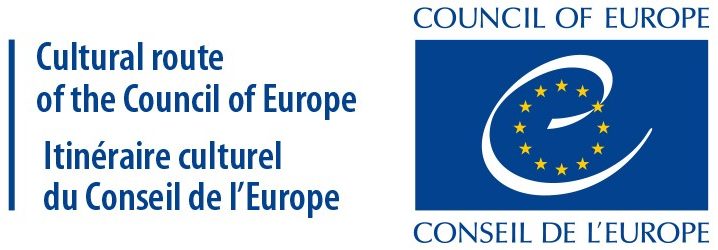
Fellesmøte for styret og scientific committee på Granavollen
Den 15. og 16. mai møttes både ACSOW-styret og scientific committee for felles møtedager på Granavollen i Norge. Granavollen ligger i regionen Hadeland i Norge,
The Cultural Route of St Olav Ways is a certified cultural route of the council of Europe. ACSOW (Association for the cultural route of st olav ways) is the association founded to manage the status and the route. The route passes through Finland, Denmark, Sweden and Norway, with Nidaros cathedral in Trondheim (Norway) as the pilgrim goal. The association has members in all four countries.
The theme of the St. Olav Ways is to promote the common European heritage represented through the legacy of St. Olav, and the legacy of the pilgrim traffic following his death and canonization.
The cultural route of St Olav Ways consists of both initinirary members connected to the pilgrims routes, and thematic members more generally connected to the St. Olav heritage.
The Cultural Routes of the Council of Europe are key resources for responsible tourism and sustainable development.
They cover a range of different themes, from architecture and landscape to religious influences, from gastronomy and intangible heritage to the major figures of European art, music and literature.

Association for the Route of St. Olav Ways (ACSOW) is an association of members based on the democratic values of the European Cultural Routes.
The main purpose for ACSOW is to manage the status as a European Cultural Route. By facilitating for pilgrimage on the old thoroughfares towards the Cathedral of Nidaros and Trondheim, the association shall promote the common European heritage represented through the Route of St. Olav Ways. Furthermore, ACSOW will facilitate projects, publications, research and activities coherent with the St. Olav heritage in general. ACSOW will focus especially on Pilgrimage along the St. Olav Ways.
The certification “Cultural Route of the Council of Europe” is a guarantee of excellence. The networks implement innovative activities and projects pertaining to the following fields of action: co-operation in research and development; enhancement of memory, history and European heritage; cultural and educational exchanges for young Europeans; contemporary cultural and artistic practice;
cultural tourism and sustainable cultural development.
‘European Cultural Routes’ are transnational routes that help tourists discover how Europeans have lived since ancient times. The concept was launched by the Council of Europe in 1987.
The Cultural Routes of the Council of Europe are an invitation to travel and to discover the rich and diverse heritage of Europe by bringing people and places together in networks of shared history and heritage. They put into practice the values of the Council of Europe: human rights, cultural diversity, intercultural dialogue and mutual exchanges across borders.
Over 30 Cultural Routes of the Council of Europe provide a wealth of leisure and educational activities for all citizens across Europe and beyond and are key resources for responsible tourism and sustainable development. They cover a range of different themes, from architecture and landscape to religious influences, from gastronomy and intangible heritage to the major figures of European art, music and literature.
To walk on ancient routes to sacred sites is the essence of pilgrimage, historically and contemporary. Unlike ancient times, we are now living in a diverse cultural and religious society. Modern pilgrims define in greater sense both reason and motive for their pilgrimage. The pilgrimage phenomenon of today is one of diversity. Modern pilgrims are open minded, using pilgrimage as a way of seeking meaning of life. The experience of nature, meetings with fellow pilgrims, common identity through culture and history is important. Slowness, freedom, simplicity, carelessness, silence, spirituality and sharing are essential elements for many. Modern pilgrims take ownership to their pilgrimage because no one but the pilgrim can claim ownership to the pilgrim phenomenon.
Keeping the Cultural Routes alive is not only about revalorising ancient legacies and having contemporary handicraft activities manufacturing artefacts and souvenirs to commemorate the origin of the Routes. They can equally gain from modern forms of art and creativity.
Thus, small and medium sized enterprises (SME) are invited to explore new product development strategies to foster the offer along Cultural Routes. For instance, based on the presence of craft industries, local food production and gastronomy, artists, and cultural and historical activities fosters product and service innovations and create greater added value and sustainable cultural tourism.
It is important to expose traditional tourism actors to cultural and creative sectors to contribute to innovation capacity in cultural tourism and to provide a fertile soil for new innovative tourism ideas through intersections of culture, tourism, creative professions and the use of information technologies.
Public and private companies and organisations are welcome as ACSOW members.
Individual membership is not allowed. Members pay an annual membership fee to the Association.
The membership fee is 500 Euro

Den 15. og 16. mai møttes både ACSOW-styret og scientific committee for felles møtedager på Granavollen i Norge. Granavollen ligger i regionen Hadeland i Norge,

På det digitale årsmøtet til ACSOW den 22.april, ble et nytt styre enstemmig valgt. Styret består nå av: Leder/president: Janke Rasmussen, Norge (Pilegrimssenter Dale-Gudbrand/Gudbrandsdalsmusea AS)

På det digitale årsmøtet til ACSOW den 27.mai, ble et nytt styre enstemmig valgt. Styret består nå av: Leder/president: Per Rosenberg, Sverige (Linköping Stift) Nestleder:

ACSOW avholder sitt årsmøte den 27. mai i Roskilde. Valgkomiteen ønsker i den forbindelse innspill til nye kandidater til ACSOW-styret. Et styremedlem velges for to
Error: No connected account.
Please go to the Instagram Feed settings page to connect an account.
Postboks 2819
Elgeseter
7432 Trondheim
NORWAY
Created by Selbu Trykk AS – All rights reserved ©2023